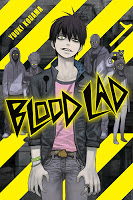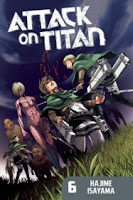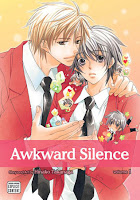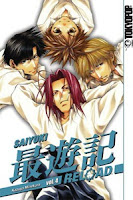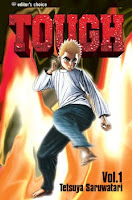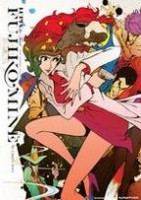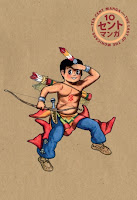It’s the last Wednesday in August which means it’s the first day in Experiment in Manga’s monthly manga giveaway! Up for grabs this time around is the first omnibus volume of Yuuki Kodama’s Blood Lad manga as published by Yen Press, which is equivalent to the first two volumes of the original Japanese release. Since the anime is currently airing, I thought there might be some renewed interest in the series. As per usual, the contest is open worldwide!
Vampires seem to be a perennial favorite in film and literature. Manga is no exception and vampires abound. They show up in many different genres—action, comedy, horror, romance (just to name a few)—and appear in all of the major demographics. Shōjo? Matsuri Hino’s Vampire Knight. Shōnen? Hirohiko Araki’s JoJo’s Bizarre Adventure. Josei? Tomu Ohmi’s Midnight Secretary. Seinen? Yuuki Kodama’s Blood Lad. (And that’s just off the top of my head…there are many, many more examples I could provide.) Generally, I prefer my vampires to be real monsters, terrifying creatures that pose a genuine threat to the humans around them. But I’ll admit, I am greatly amused by Staz in Blood Lad. He’s such an otaku goofball that I can’t help but like him.
So, you may be wondering, how can you win a copy of Blood Lad, Omnibus 1?
1) In the comments below, simply tell me who your favorite vampire in manga is and why. (Be sure to mention which manga they’re from, too.)
2) For a second entry, name a vampire manga that hasn’t been mentioned yet by me or by someone else.
3) If you’re on Twitter, you can earn a bonus entry by tweeting about the contest. Make sure to include a link to this post and @PhoenixTerran (that’s me).
And there you have it! Each person can earn up to three entries; you have one week to submit your comments. If you have trouble leaving comments, or if you would prefer, you can e-mail me your entries at phoenixterran(at)gmail(dot)com and I will post them in your name. The giveaway winner will be randomly selected and announced on September 4, 2013.
VERY IMPORTANT: Include some way that I can contact you. This can be an e-mail address, link to your website, Twitter username, or whatever. If I can’t figure out how to get a hold of you and you win, I’ll just draw another name.
Contest winner announced—Manga Giveaway: Blood Lad Giveaway Winner

